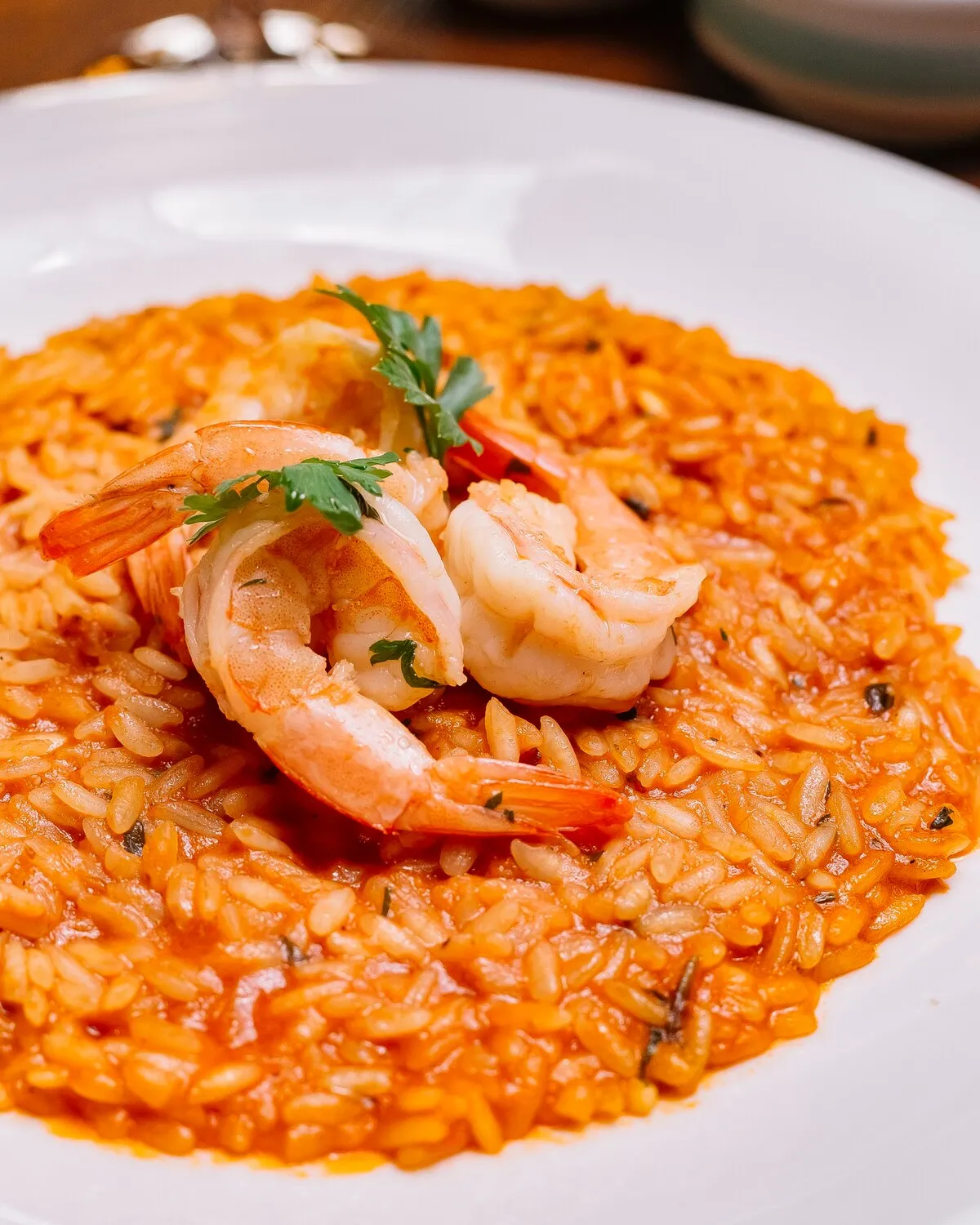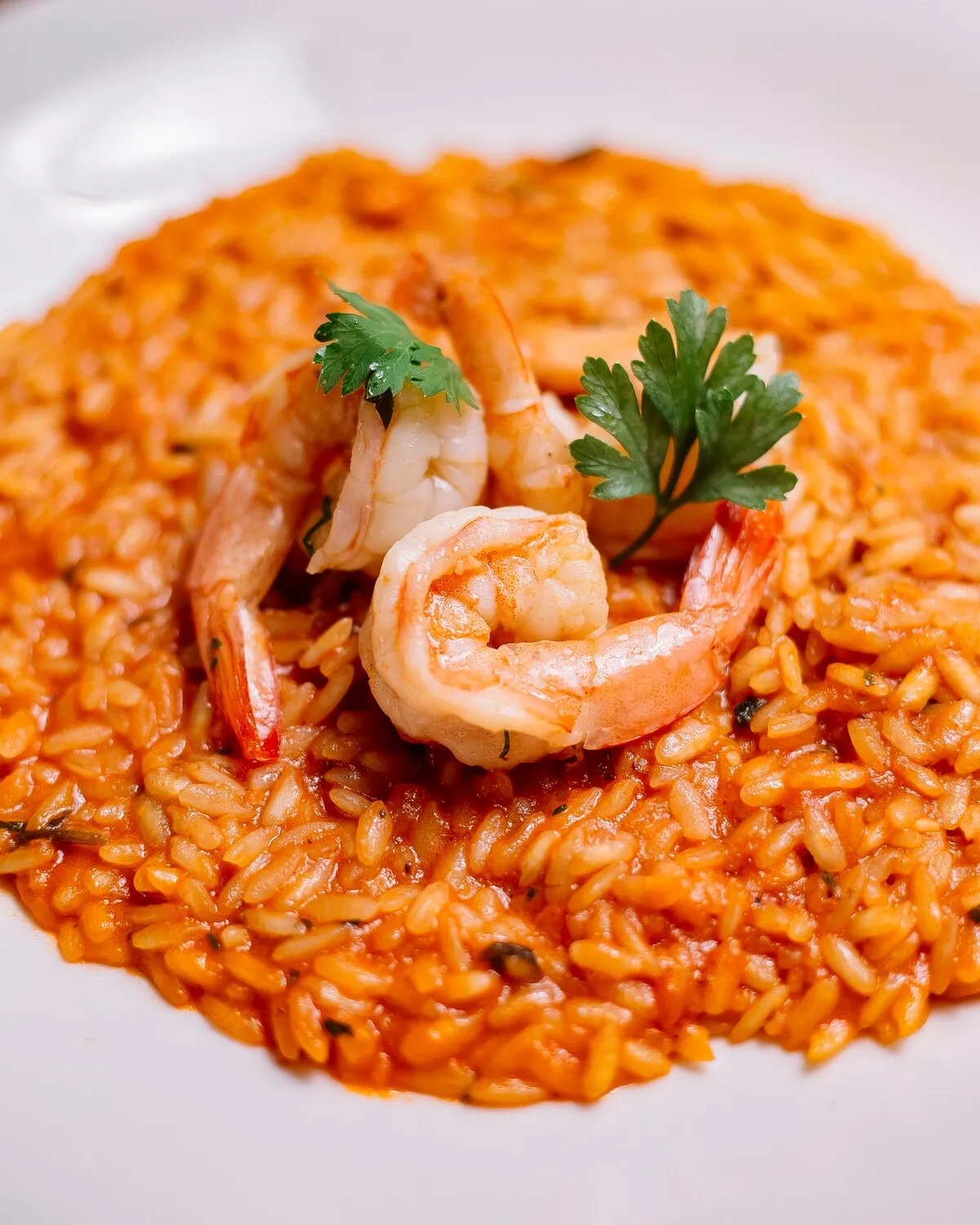
Risoto de Frutos do Mar
Seafood risotto.
Nutrition Facts
* The % Daily Value (DV) tells you how much a nutrient in a serving of food contributes to a daily diet. 2,000 calories a day is used for general nutrition advice.
Risotto's origins can be traced back to Arab influences in Sicily and the introduction of rice to Italy. The dish evolved in northern Italy, where the fertile Po Valley provided ideal conditions for rice cultivation. Seafood became a common addition along the coasts, creating the iconic Risotto de Frutos do Mar.
Risotto is more than just a dish; it's an experience, often associated with leisurely meals and shared enjoyment.
Family Gatherings
Risotto is frequently prepared and enjoyed during family gatherings and celebrations in Italy, showcasing the importance of shared meals and traditions.
Regional Variations
While Risotto de Frutos do Mar is found throughout Italy, regional variations exist depending on the availability of seafood and local culinary preferences. Different regions may emphasize specific types of seafood or incorporate unique regional herbs and spices.
Slow Food Movement
The preparation of risotto, requiring constant attention and stirring, aligns with the principles of the Slow Food movement, emphasizing quality ingredients and a deliberate approach to cooking.
Risotto de Frutos do Mar offers a symphony of briny, savory, and subtly sweet flavors, balanced by the creamy texture of the rice.
The dominant flavors come from the seafood, which can include shrimp, mussels, clams, calamari, and scallops. Each contributes a unique briny sweetness. The broth, typically fish or vegetable, adds a savory depth. White wine provides acidity and complexity, while garlic, onion, and herbs such as parsley or basil enhance the aromatics. A touch of chili flakes can provide a subtle heat. The rice itself, traditionally Arborio or Carnaroli, contributes a starchy creaminess that binds all the flavors together.
Rice Selection
Use Arborio or Carnaroli rice. These varieties have a high starch content, which is crucial for achieving the creamy texture that is characteristic of risotto.
Warm Broth
Keep the broth warm throughout the cooking process. Adding cold broth will lower the temperature of the rice and prevent it from cooking evenly.
Gentle Stirring
Stir the risotto frequently, but gently. Over-stirring can release too much starch and make the risotto gummy, while under-stirring can cause it to stick to the bottom of the pan.
Seafood Timing
Add the seafood towards the end of the cooking process. Overcooked seafood can become tough and rubbery.
Mantecare
At the end of cooking, 'mantecare' by stirring in butter and Parmesan cheese. This creates a creamy, emulsified sauce that binds the risotto together.
Explore additional Risotto dishes and restaurants
Explore RisottoDiscover top dining spots and culinary experiences in V Redonda.
Explore V RedondaLearn more about the food culture, restaurant scene, and culinary heritage of Brazil.
Explore Brazil
